
Kaiser-Wilhelm-I.-Eiche: A Living Monument
Discover the Kaiser-Wilhelm-I.-Eiche in Hamburg: A historic oak monument honoring Germany's first emperor, nestled in the serene Wallanlagen park, offering a tranquil escape.
The Kaiser-Wilhelm-I.-Eiche, or Emperor William I Oak, is a historic monument located on Holstenwall in Hamburg-Mitte. This venerable oak tree stands as a tribute to Wilhelm I, the first German Emperor, and represents a significant piece of German history. Planted to commemorate his reign and the unification of Germany, the oak offers a serene escape within the bustling city. Visitors can reflect on the historical importance of the site while enjoying the peaceful ambiance of the surrounding Wallanlagen park. The monument is easily accessible and provides a unique opportunity to connect with Hamburg's past, making it a worthwhile stop for history enthusiasts and casual tourists alike. Open daily, it's a great spot for a quiet moment or a leisurely stroll.
A brief summary to Kaiser-Wilhelm-I.-Eiche
- Holstenwall 1, Hamburg, Hamburg-Mitte, 20355, DE
Local tips
- Combine your visit with a walk through the Wallanlagen park for a relaxing experience.
- Visit early in the morning or late in the afternoon to avoid crowds and enjoy a quieter atmosphere.
- Check local events listings, as the Wallanlagen park sometimes hosts festivals and concerts.
Getting There
-
Public Transport
From Hamburg Hauptbahnhof (main train station), take the U3 subway line to St. Pauli station. From there, it's approximately a 5-minute walk. Exit the station towards Millerntorplatz, walk past Planten un Blomen, and turn left onto Holstenwall. The Kaiser-Wilhelm-I.-Eiche will be on your right. A single ride ticket costs approximately €3.50.
-
Walking
If you are near the St. Michaelis Church (Michel), walk north along Ost-West-Straße, then turn right onto Holstenwall. Continue for a few blocks; the Kaiser-Wilhelm-I.-Eiche will be on your left, within the Wallanlagen park. The walk is approximately 10-15 minutes.
-
Taxi/Ride-Share
A taxi or ride-share from Hamburg Hauptbahnhof to Holstenwall 1 will cost approximately €12-€18, depending on traffic. The journey typically takes 10-15 minutes. Ask the driver to drop you off near the Gericht Forum, as the oak is located just across the street within the park.
-
Driving
If driving, navigate to Holstenwall 1, 20355 Hamburg. Parking is limited in the immediate vicinity. Paid parking is available at Holstenwall 5, with rates of €3.50 per hour, with a 2 hour max, Monday to Saturday from 9:00 to 20:00. Parking is free outside of these hours and on Sundays. Alternatively, consider parking garages further away from the location.
Discover more about Kaiser-Wilhelm-I.-Eiche
Iconic landmarks you can’t miss
Kaiser-Wilhelm-I.-Eiche
0.0 km
Discover the Kaiser-Wilhelm-I.-Eiche in Hamburg: A historic oak monument honoring Germany's first emperor, nestled in the serene Wallanlagen park, offering a tranquil escape.
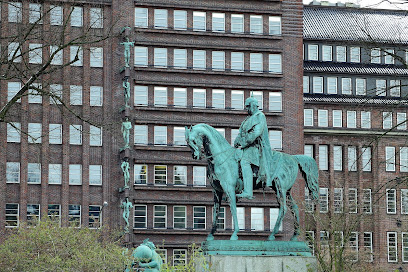
Johannes-Brahms-Platz
0.2 km
Discover Johannes-Brahms-Platz in Hamburg: a vibrant square steeped in musical history, home to the Laeiszhalle, and a tribute to the great composer, Johannes Brahms, offering a rich cultural experience.
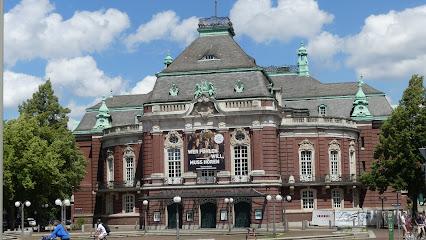
Memorial Arch
0.4 km
A poignant war memorial in Hamburg, the Memorial Arch honors the fallen of both World Wars with its minimalist design and Ernst Barlach's moving sculpture, serving as a reminder of peace.
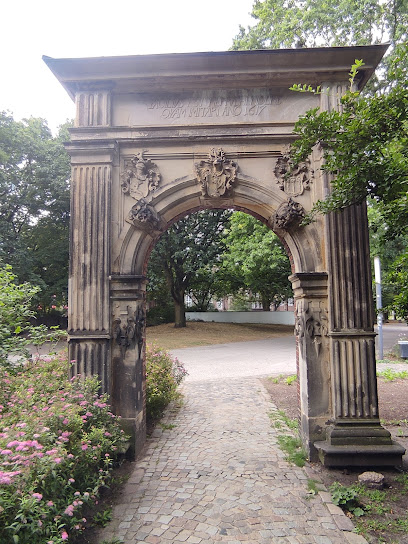
Nachtmichel
0.7 km
Discover Hamburg's iconic St. Michael's Church: a Baroque masterpiece with stunning city views, rich history, and magnificent organ concerts, a true symbol of the city.
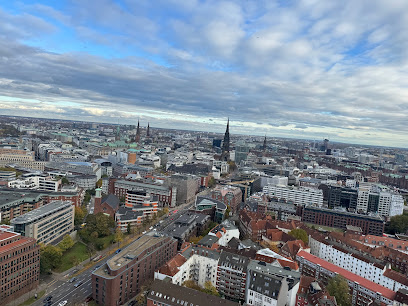
Brunnen am Krayenkamp
0.8 km
Discover the historic Krameramtsstuben, a charming 17th-century courtyard in Hamburg-Mitte, offering a glimpse into the city's past with its well-preserved architecture and unique atmosphere.
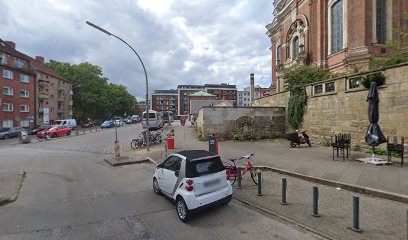
Alte Post
0.9 km
Explore the Alte Post in Hamburg: a historic landmark blending stunning architecture with a vibrant shopping experience in the heart of the city's Passagenviertel.
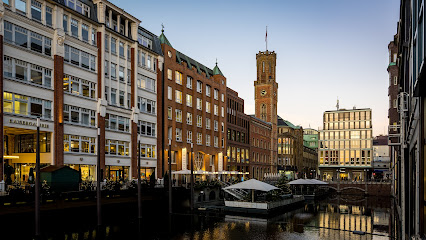
City of Hamburg Germany
0.9 km
Explore Hamburg, Germany's vibrant port city: Discover maritime history, modern architecture, and a thriving cultural scene in this captivating metropolis.
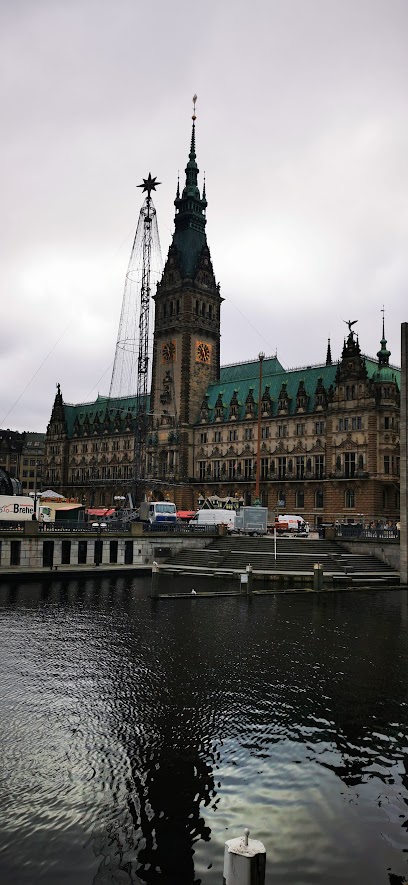
Beckstraße
1.0 km
Discover Beckstraße in Hamburg's Sternschanze: A charming residential street with historical architecture, local shops, and a unique glimpse into the city's past.
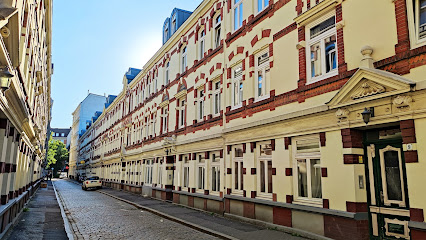
Mönkedamm channel
1.0 km
Discover the tranquil Mönkedamm Channel in Hamburg-Mitte: a picturesque escape offering serene waters, lush greenery, and a blend of history, culture, and recreational activities for an unforgettable experience.
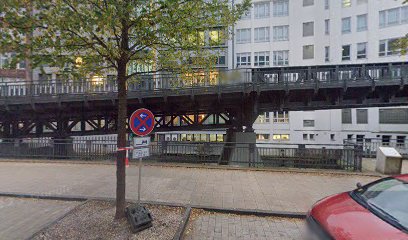
Jungfernstieg Promenade
1.0 km
Explore Hamburg's iconic Jungfernstieg Promenade – a scenic waterfront destination for shopping, dining, and unforgettable views of the Alster Lakes.
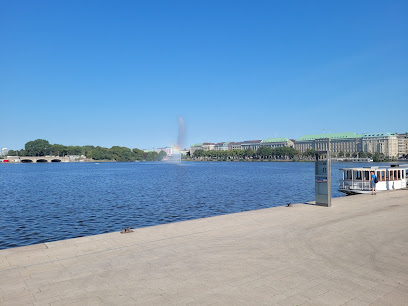
Stintfang
1.0 km
Experience breathtaking views of Hamburg's bustling harbor from Stintfang, an iconic observation deck that captures the city's vibrant spirit and rich maritime history.
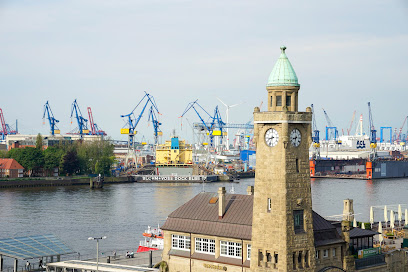
Denkmal für die Gefallenen beider Weltkriege
1.1 km
A poignant memorial in Hamburg-Mitte honoring the fallen of both World Wars, featuring Ernst Barlach's moving sculpture and offering a space for reflection and remembrance.
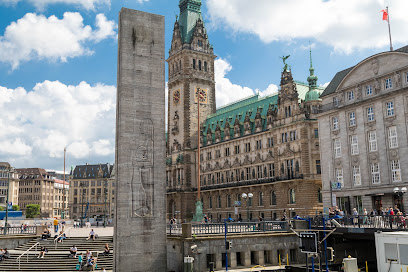
John Lennon, Rock 'n' Roll Doorway
1.1 km
Walk in the footsteps of a Beatle at this iconic Hamburg doorway, immortalized on John Lennon's 'Rock 'n' Roll' album cover, and experience the city that shaped their sound.
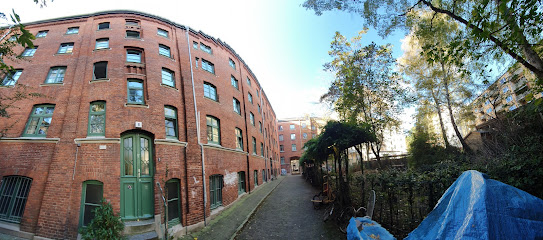
Hygieia Fountain
1.1 km
Discover the Hygieia Fountain in Hamburg's City Hall: a symbol of resilience and a tribute to the city's triumph over the cholera epidemic of 1892, embodying Hamburg's enduring spirit.
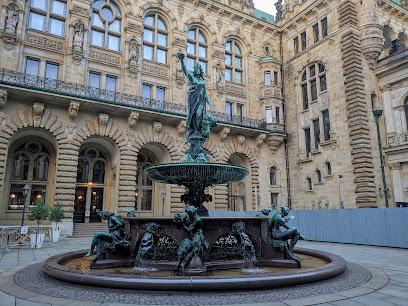
Hamburg Townhall
1.1 km
Discover Hamburg's majestic Town Hall: A Neo-Renaissance masterpiece, a symbol of Hanseatic pride, and the heart of Hamburg's vibrant history and self-governance.
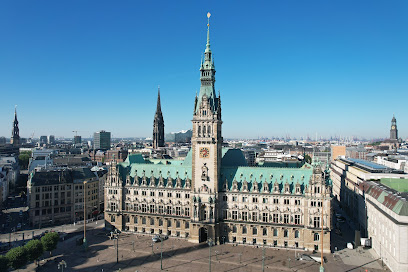
Unmissable attractions to see
Laeiszhalle
0.3 km
Discover Laeiszhalle, Hamburg's iconic concert hall known for its splendid architecture and exceptional musical performances.
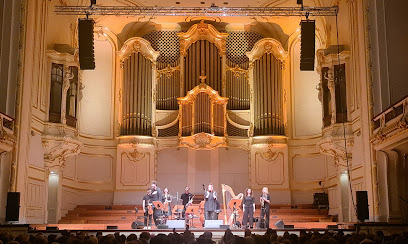
Gängeviertel e.V.
0.4 km
Explore the artistic heartbeat of Hamburg at Gängeviertel, where creativity, culture, and community come together in vibrant harmony.

Fabrique im Gängeviertel
0.4 km
Discover the vibrant cultural center of Fabrique im Gängeviertel in Hamburg, where art and community unite for a unique experience.
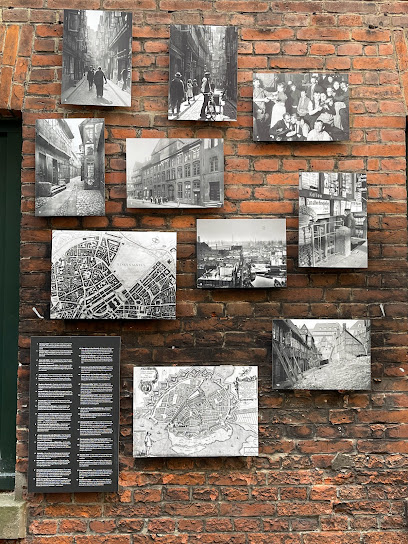
Composers Quarter Hamburg
0.4 km
Explore the Composers Quarter in Hamburg and immerse yourself in the rich history of classical music, celebrating iconic composers and their timeless works.
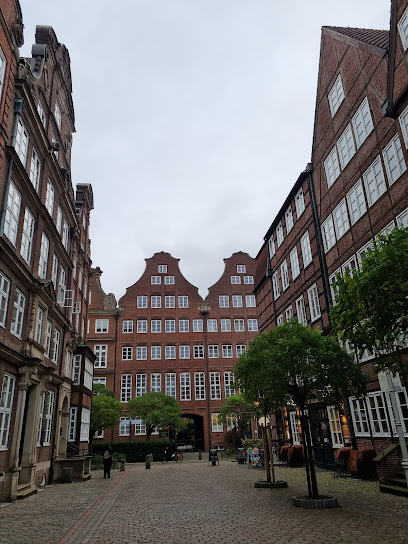
Brahms Museum
0.4 km
Uncover the legacy of Johannes Brahms in Hamburg at the Brahms Museum – a haven for music lovers and history enthusiasts alike.
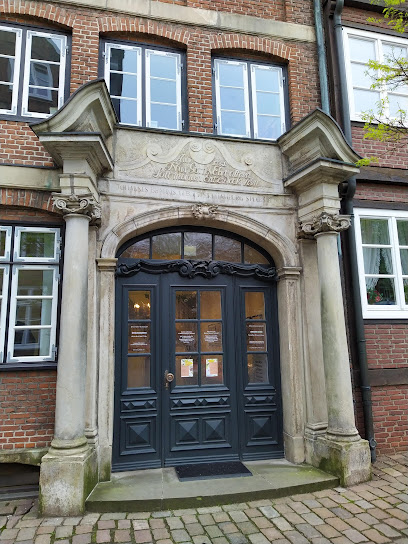
Hummel Memorial
0.4 km
Discover the Hummel Memorial, a serene tribute to Hamburg's cultural heritage, blending artistic beauty with historical significance in a picturesque setting.
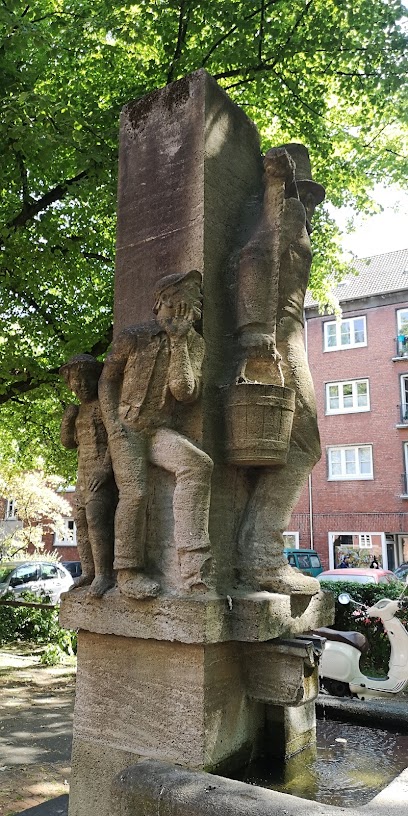
Heiligengeistfeld
0.5 km
Experience the vibrant atmosphere of Heiligengeistfeld in Hamburg, a lively fairground filled with thrilling rides, delicious food, and unforgettable memories.
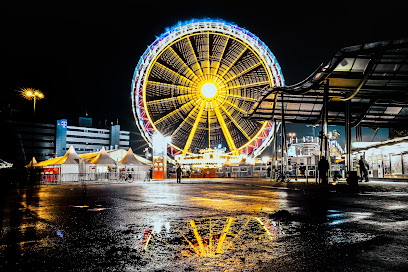
Museum for Hamburg History
0.5 km
Discover the fascinating history of Hamburg at this premier local history museum, featuring captivating exhibits and engaging displays.

Ludwig Wolf's House
0.5 km
Explore the historical marvel of Ludwig Wolf's House in Hamburg, a captivating landmark showcasing the city's rich architectural heritage.
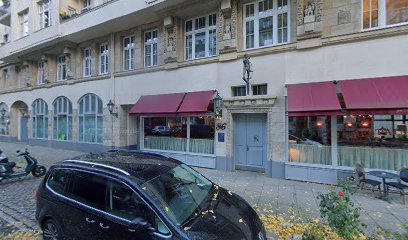
Feldstraße Bunker (Flakturm IV)
0.5 km
Explore the Feldstraße Bunker in Hamburg, a historical landmark blending WWII heritage with vibrant bars, cafes, and restaurants in a unique cultural hub.

Brunnen
0.5 km
Experience the serene beauty and cultural significance of Brunnen, a delightful tourist attraction in the heart of Hamburg.
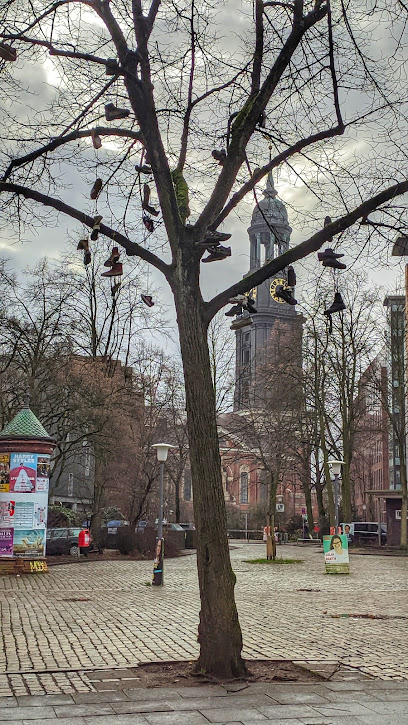
Der Museumsdienst Hamburg
0.5 km
Explore the rich cultural heritage of Hamburg at Der Museumsdienst Hamburg, where history, art, and science come alive through engaging exhibits.

Streetside Gallery
0.6 km
Explore the vibrant Streetside Gallery in Hamburg, an open-air art showcase that celebrates local creativity through stunning murals and street art.
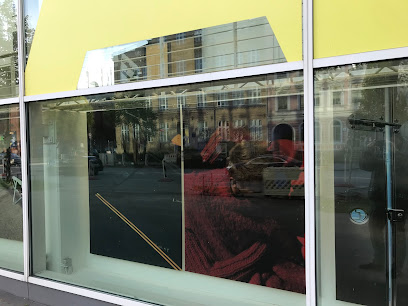
Millerntorwache
0.6 km
Discover the captivating history and architectural beauty of Millerntorwache, a must-see landmark in the heart of Hamburg.

Millerntor-Stadion
0.6 km
Experience the passion of German football at Millerntor-Stadion, a cultural landmark in Hamburg, blending sports, food, and community spirit.

Essential places to dine
philipps Restaurant
0.6 km
Experience exquisite dining at Philipp's Restaurant in Hamburg-Mitte - where local flavors meet culinary artistry.

Casse Croute
0.6 km
Discover exquisite French-inspired cuisine at Casse Croute in Hamburg – where every meal is a celebration of culinary excellence.

[m]eatery restaurant & botanist bar Hamburg
0.6 km
Discover the best steak in Hamburg at [m]eatery restaurant & botanist bar - where exquisite flavors meet vibrant ambiance.
![[m]eatery restaurant & botanist bar Hamburg](https://evendo-location-media.s3.amazonaws.com/RestaurantImages/152e3fd9-f3c9-4d43-8925-1248cf501029)
brasserie TORTUE
0.7 km
Experience exquisite French dining at Brasserie TORTUE in Hamburg—where culinary artistry meets elegant ambiance.

chez l'ami TORTUE
0.7 km
Experience exquisite French cuisine at Chez l'ami TORTUE in Hamburg – where culinary tradition meets modern elegance.
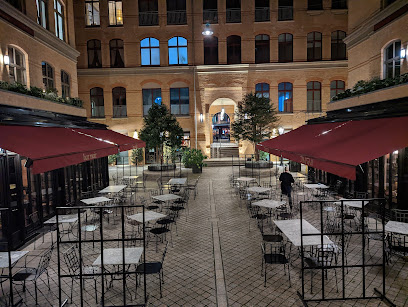
Old Commercial Room
0.7 km
Experience authentic German cuisine at Hamburg's historic Old Commercial Room – where tradition meets taste.
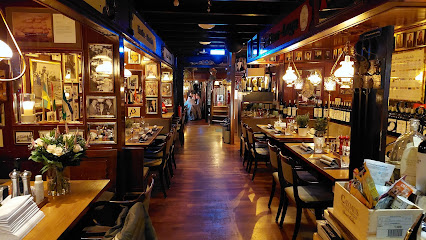
Feldstern
0.8 km
Discover Feldstern in Hamburg: A culinary oasis offering traditional and vegan delights amidst a charming beer garden.
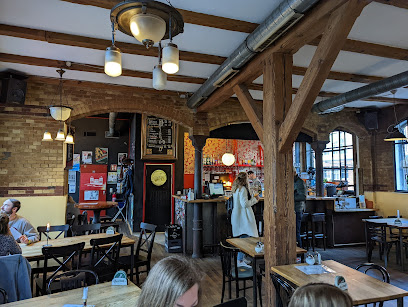
Restaurant Rialto
0.8 km
Experience the flavors of Hamburg at Restaurant Rialto - where tradition meets modern cuisine in a charming atmosphere.
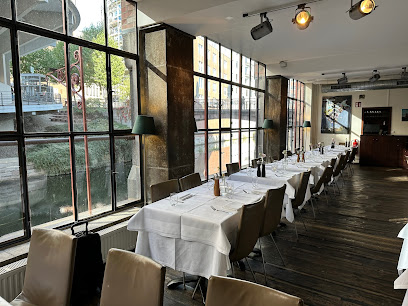
clouds Heaven’s Bar & Kitchen
0.8 km
Discover clouds Heaven’s Bar & Kitchen - where exquisite dining meets stunning views in Hamburg's iconic Reeperbahn district.

Hamborger Veermaster
0.9 km
Discover the flavors of Hamburg at Hamborger Veermaster – where traditional German cuisine meets modern dining in a cozy atmosphere.

east Restaurant
0.9 km
Discover culinary excellence at east Restaurant in Hamburg—where Japanese flavors meet steakhouse sophistication.

HELO Restaurant
0.9 km
Experience authentic Brazilian cuisine at HELO Restaurant in Hamburg - a vibrant destination for food lovers seeking rich flavors and warm hospitality.
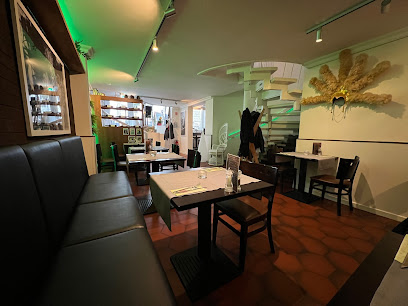
Schlachterbörse
0.9 km
Experience top-tier steaks and exceptional service at Hamburg's premier steakhouse, Schlachterbörse - where culinary excellence meets local charm.
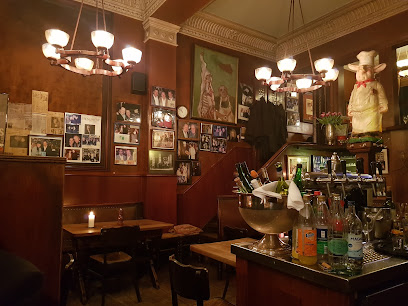
NIKKEI NINE
0.9 km
Experience a unique blend of Japanese and Peruvian cuisine at NIKKEI NINE in Hamburg, where every dish tells a story.

Haerlin Restaurant
0.9 km
Experience unparalleled fine dining at Haerlin Restaurant in Hamburg, where culinary artistry meets exceptional service in an elegant setting.

Markets, malls and hidden boutiques
Goldmarie Shop - Hamburg
0.5 km
Explore Goldmarie Shop in Hamburg for trendy women's and youth fashion, unique accessories, and a delightful shopping experience.

the vintage gallery
0.5 km
Discover unique vintage clothing and furniture at The Vintage Gallery, a hidden gem in Hamburg perfect for finding timeless treasures.
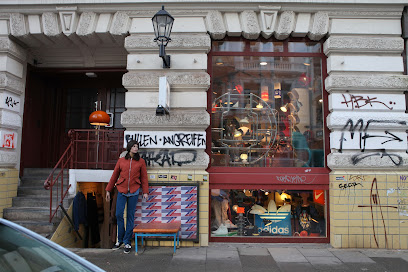
nosame GmbH
0.6 km
Explore nosame GmbH in Hamburg for unique gifts and stylish clothing that reflect the city's eclectic charm and creativity.

Hanseviertel
0.7 km
Discover Hanseviertel: Hamburg's premier shopping mall blending boutique stores, eateries, and a vibrant cultural atmosphere.
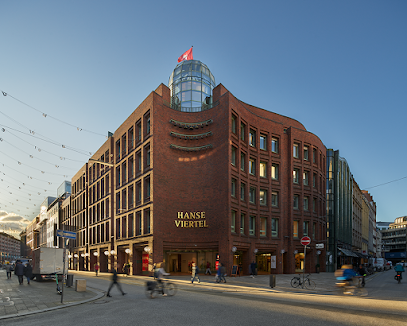
Urban Outfitters
0.8 km
Discover unique fashion and eclectic home goods at Urban Outfitters in the heart of Hamburg, your go-to destination for trendy shopping.
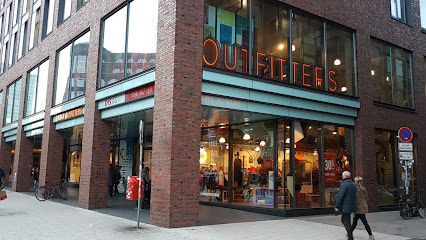
Frau Vogel – Erinnerungen an Hamburg
0.8 km
Explore Frau Vogel, Hamburg's enchanting gift shop, offering unique souvenirs and local crafts to capture the city's spirit.

wasted hour - concept store
0.8 km
Explore Wasted Hour in Hamburg - a concept store that redefines fashion with unique designs and an inspiring atmosphere.

American Vintage
0.8 km
Explore the latest trends and unique styles at American Vintage, a chic clothing store in the heart of Hamburg, perfect for all fashion enthusiasts.

GALLERIA
0.8 km
Discover Galleria Hamburg: A luxurious shopping mall blending high-end fashion, delicious dining, and an elegant atmosphere in the heart of the city.

Hoi Lieblingsstücke
0.8 km
Explore Hoi Lieblingsstücke in Hamburg for unique gifts and souvenirs that capture the city's artistic spirit and local charm.

preity - Deine Female First Boutique
0.8 km
Explore Preity, a chic boutique in Hamburg, offering an exquisite selection of women's clothing, cosmetics, and unique gifts, perfect for every fashion lover.

CHANEL BOUTIQUE HAMBURG
0.8 km
Explore the luxury and elegance of CHANEL Boutique Hamburg, where timeless fashion meets exquisite craftsmanship in a stunning shopping experience.
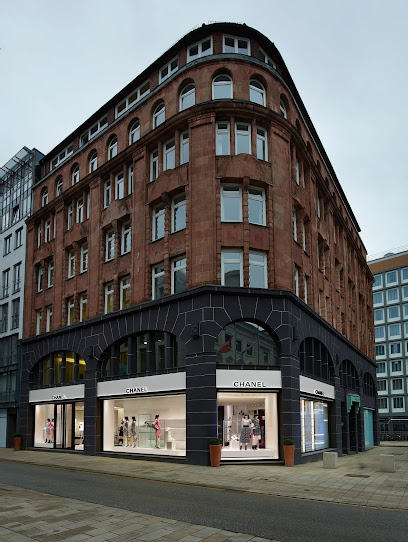
Montblanc Boutique Hamburg - Neuer Wall
0.9 km
Experience the epitome of luxury at Montblanc Boutique Hamburg, offering exquisite jewelry, leather goods, and fine stationery in a sophisticated setting.
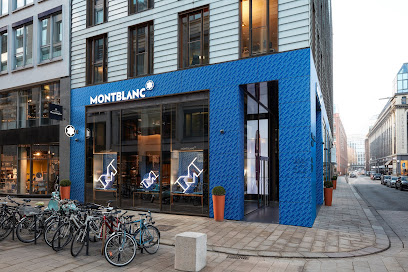
C'N'C
0.9 km
Explore the latest fashion trends at C'N'C, Hamburg's chic clothing store on the stunning Jungfernstieg promenade.

St. Pauli Shop Reloaded
0.9 km
Explore the eclectic offerings of St. Pauli Shop Reloaded, a vibrant kiosk in the heart of Hamburg's lively Reeperbahn district.

Essential bars & hidden hideouts
Meyer Lansky's
0.7 km
Discover the energetic spirit of Hamburg at Meyer Lansky's, where exquisite cocktails meet a lively atmosphere for an unforgettable night out.

ZWICK St. Pauli
0.7 km
Discover the vibrant nightlife at ZWICK St. Pauli, where live music and delicious dining create unforgettable experiences in Hamburg.

Dschungel - Hamburg
0.8 km
Dschungel in Hamburg: A vibrant bar experience with exotic decor and delicious cocktails, perfect for unwinding and socializing.

Tipsy Baker Bar Hamburg
0.9 km
Discover the best drinks and vibrant nightlife at Tipsy Baker Bar, Hamburg's favorite spot for cocktails and socializing.

Yakshi's Bar
0.9 km
Experience Hamburg's vibrant nightlife at Yakshi's Bar – a cocktail haven blending delicious drinks with a cozy lounge vibe.
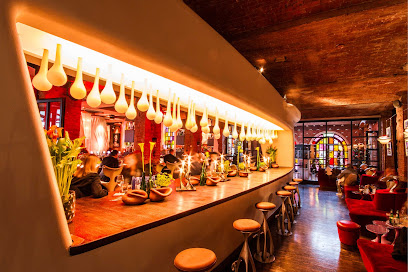
Lehmitz Reeperbahn - Bar & Club - Kiez Hamburg
0.9 km
Discover the pulsating nightlife of Hamburg at Lehmitz Reeperbahn, a lively bar and club at the heart of the iconic Reeperbahn district.

Story Bar Hamburg
1.1 km
Discover the vibrant nightlife at Story Bar Hamburg, where creative cocktails meet an energetic dance floor on the iconic Reeperbahn.

The Chug Club
1.1 km
Discover the vibrant atmosphere and unique cocktails at The Chug Club, Hamburg's must-visit cocktail bar for a delightful night out.

Bar Wohlzimmer
1.1 km
Experience the best of Hamburg's nightlife at Bar Wohlzimmer, where great drinks and a cozy atmosphere come together.

Fritz Bauch
1.1 km
Experience the charm of Hamburg's nightlife at Fritz Bauch, a cozy pub in Altona offering a vibrant atmosphere and delicious local brews.

Tortuga Bar - Hamburg
1.2 km
Discover the vibrant Tortuga Bar in Hamburg, where tropical cocktails and a lively atmosphere create the perfect escape from the city.

sanktpaulibar
1.2 km
Experience Hamburg's nightlife at Sankt Pauli Bar—where local charm meets modern vibes in the heart of St. Pauli.

Roschinsky's - Bar
1.2 km
Experience the vibrant nightlife of Hamburg at Roschinsky's, a lively bar offering cocktails, music, and unforgettable moments.

The Bohemian - Bar
1.2 km
Discover The Bohemian, Hamburg's premier cocktail bar, known for its signature drinks and vibrant nightlife in the heart of the city.

Maria Bar Hamburg St Pauli
1.2 km
Discover the energetic nightlife of Hamburg at Maria Bar in St. Pauli, where creative cocktails and a vibrant atmosphere await.




